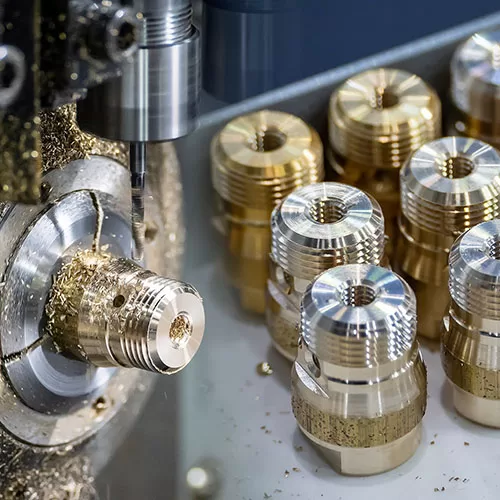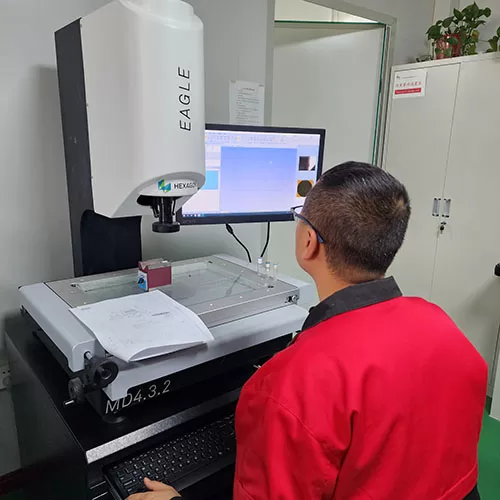Brass used for CNC machining generally has excellent machining properties. Brass comes in different grades, each with its own unique properties and ability to suit different applications.

THE COMPOSITION OF BRASS
In manufacturing, especially when it comes to alloys like brass, the term “grade” refers to the specific ingredients that make up the alloy. Brass grades indicate the precise mixture of constituent metals in a brass alloy, which may include varying proportions of copper, zinc, lead, and other elements. These components can affect the CNC machinability of brass alloys and their overall performance in specific applications. Let’s take a closer look at the elements of brass and how they form different grades:
- Copper (Cu): Copper is the main component of brass and determines many of its basic properties. The copper content in brass ranges from 55% to 95%, depending on the grade. Higher copper content generally results in darker colors and increases strength and corrosion resistance, but reduces workability. Copper gives brass excellent electrical and thermal conductivity, making it suitable for making components such as terminal blocks and heat exchangers during CNC machining. Higher copper content also provides excellent corrosion resistance, making the alloy more resistant to oxidation, rust and general wear and tear. It also makes brass more ductile, which refers to the material’s ability to deform under tensile stress without breaking.
- Zinc (Zn): Zinc is a minor component in brass. It can comprise 5% to 40% of the alloy. Zinc affects the color of brass, with brass becoming more yellow as the ratio increases. It also increases strength and stiffness at the expense of ductility and ductility. Zinc (Zn) contributes to the strength and hardness of brass. More zinc makes the alloy harder, more durable, and more resistant to physical impact. However, too much zinc can reduce the ductility of the alloy and make it more brittle, allowing it to crack or break under extreme stress. Zinc also gives brass its distinctive yellow color—the more zinc, the more gold-like the appearance.
- Lead (Pb): Often added to improve workability, lead does not chemically react or form compounds with copper or zinc, but is dispersed throughout the brass structure. Brass with added lead is often called “leaded brass” and is easier to machine.
- Other Elements: Sometimes, other elements such as tin, nickel, aluminum, manganese or silicon may be added to impart specific properties. These may affect properties such as strength, wear resistance or castability.
BRASS FOR CNC MACHINING
- C36000 (free cutting brass). This is the most commonly used brass material in CNC machining and is often referred to as free-cutting or easy-machining brass due to its excellent machining properties. C36000 is composed of approximately 61% copper, 35-39% zinc, and 2.5-3.7% lead. It is known for its strength, corrosion resistance and excellent machinability, making it ideal for producing complex parts requiring intricate details. Common applications include gears, pinions, faucet components, valve stems and connectors.
- C46400 (Navy Brass). Containing approximately 60% copper, 39.25% zinc and 0.75% tin, this grade is known for its high strength, stiffness and excellent corrosion resistance, especially to seawater. Therefore, it is often used in naval and marine environments. Typical applications for C46400 naval brass include propeller shafts, marine hardware, decorative fittings and boiler parts.
- C38500 (Architectural Bronze or Low Lead Brass). C38500, also known as architectural bronze or low-lead brass, contains approximately 57% copper, 40% zinc, and 3% lead. While not as easy to machine as C36000, it still has good machinability and is highly formable. It is a popular choice for architectural applications due to its beauty and resistance to corrosion. C38500 is commonly used in building structures, decorative designs, door hardware and fasteners.
The CNC machining process involves removing material from a workpiece and shaping it into the desired part. CNC machine tools are controlled by a computer program that determines how the machine cuts or shapes a workpiece. Different materials and their respective grades (such as brass) react differently to these processing processes. Understanding how different brass grades perform under machining stress can help you choose the right material for your CNC project.

